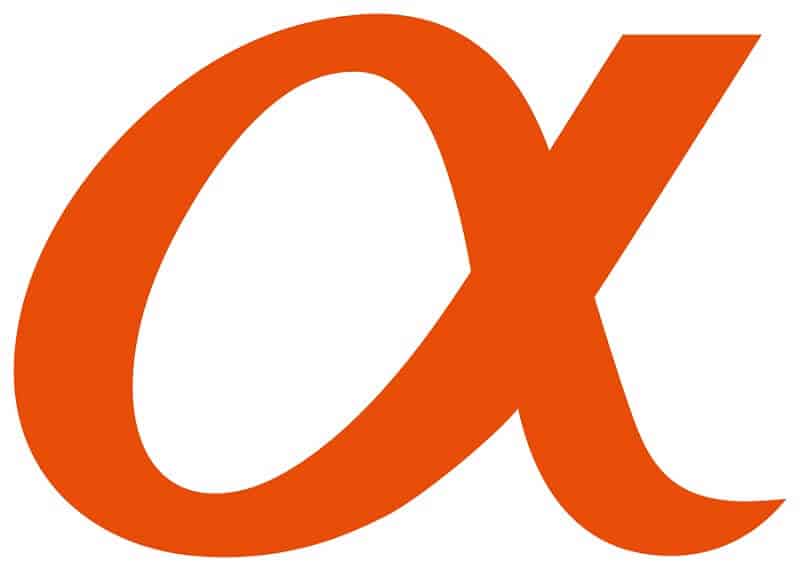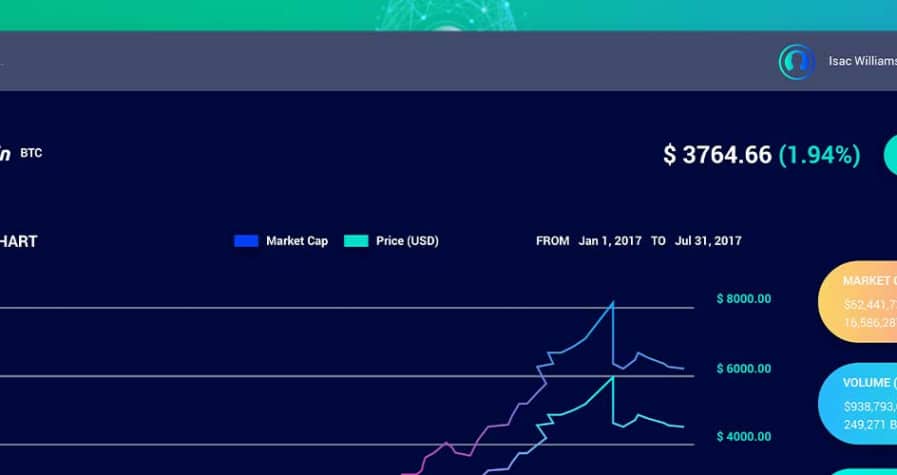Understand the Alpha investment strategy

Alpha represents a measure of an asset’s return on investment compared to the risk-adjusted expected return.
Beta represents a measure of volatility. Beta measures how an asset moves versus a benchmark.
What is Alpha? Alpha is a measure of the performance of an investment in comparison to a fitting market index, for example, the S&P 500. The base value is zero. And when you see the number one in Alpha that means that the return on the investment outperformed the overall market average by 1%. A negative alpha number shows that the return on the investment is underperforming in comparison to the market average. This measure is applicable over a strictly defined time frame.
What is Alpha more? It is one of the performance ratios that investors use to evaluate both individual stocks and portfolio as a whole. Alpha is shown as a single number, for example, 1, 2, 5 but expressed as a percentage. It shows us how an investment performed related to a benchmark index. For example, a positive alpha of 4 (+4) suggests that the portfolio’s return outperformed the benchmark index’s performance by 4%. But the alpha of negative 4 (-4) means that the portfolio underperformed the index by 4%. When alpha is zero that means that your investment had a return that met the overall market return.
What is Alpha of a portfolio?
It is the excess return the portfolio yields related to the index. When you are investing in some ETF or mutual funds you should look if they have high alpha because you will have better ROI (Return on Investment).
But you cannot use this ratio solely, you have to use it together with a beta. Beta is a measure of investment volatility. The beta will show you how volatile one investment is compared to the volatility of, for example, the S&P 500 index.
These two ratios are used to analyze a portfolio of investments and assess their theoretical performance.
How to calculate?
First, you have to calculate the expected rate of return of your portfolio. But you have to do that based on the risk-free rate of return, market risk premium, and a beta of the portfolio. The final step is to deduct this result from the actual rate of return of your portfolio.
Here is the formula
Expected rate of return = Risk-free rate of return – β x (Market return – Risk-free rate of return)
and
Alpha of the portfolio = Actual rate of return of the portfolio – Expected Rate of Return on Portfolio
The risk-free rate can be discovered from the average annual return of security, over a longer period of time.
You will find the market return by tracking the average annual return of a benchmark index, for example, S&P500. The market risk premium is calculated by deducting the risk-free rate of return from the market return.
Market risk premium = Market return – Risk rate of return
The next step is to find a beta of a portfolio. It is determined by estimating the movement of the portfolio in comparison to the benchmark index.
So, now when we have this result, expected rate of return, we can calculate further. We have to find the actual rate of return. It is calculated based on its current value and the prior value.
And here we are, we have the formula for calculation of alpha of the portfolio. All we have to do is to deduct the expected rate of return of the portfolio from the actual rate of return of the portfolio.
That was a step by step guide for this calculation.
Becoming an Alpha investor
There is a great discussion about should the average investor look for alpha results of a portfolio. But we can hear that investors mention alpha. This is nothing more than the amount by which they have beaten or underperformed the benchmark index. It can be the S&P 500 index if you are investing in the US stock market. In such a case, that would be your benchmark.
For example, if the benchmark index is up 4% over the period, and your portfolio is up 6%, your alpha is +2. But if your portfolio is up 2%, your alpha is -2.
Of course, everyone would like to beat the benchmark index all the time.
What is the Alpha investing strategy?
We know that Alpha is a measure of returns after the risk is estimated. Risk is determined as beta, a measure of how volatile one investment is related to the volatility of the benchmark index.
Alpha strategies cover equity funds with stock selection. Also, hedge fund strategies are a popular addition in alpha portfolios.
Something called “pure alpha” covers hedge funds and risk premia strategies. The point is that by adding an alpha strategy to your overall portfolio you can boost returns of the other investment strategies that are not in correlation.
Alpha is the active return on investment, measures the performance of an investment against a market index. The investment alpha is the excess return of investment relative to the return of an index.
You can generate alpha if you diversify your portfolio in a way to eliminate disorganized risks. By adding and subtracting you are managing the risk and the risk becomes organized not spontaneously. When alpha is zero that means the portfolio is in line with an index. That indicates that you didn’t add or lose any value in your portfolio.
When an investor wants to pick a potential investment, she or he considers beta. But also the fund manager’s capacity to generate alpha. For example, a fund has a beta of 1 which means it is volatile as much as the S&P index. To generate alpha, a fund manager has to generate a return greater than the S&P 500 index.
For example, a fund returns 12% per year. That fund has a beta of 1. If we know that the S&P 500 index returns 10%, it is said the fund manager generated alpha returns.
If we consider the risks, we’ll see the fund and the S&P index have the same risk. So, the fund manager generated better returns, so such managers generated alpha.
Alpha in use
You can use alpha to outperform the market by taking more risks but after the risk is considered. Well, you know that risk and reward are in tight relation. If you take more risks, the potential reward will go up. Hence, limited risks, limited rewards.
For example, hedge funds use the concept of alpha. They use beta too, but we will write later about the beta. The nature of hedge funds is to seek to generate returns despite what the market does. Some hedge funds can be hedged completely by investing 50% in long positions and 50% in short positions. The managers will increase the value of long positions and decrease the value of their short positions to generate positive returns. But such a manager should be a ninja to provide gains not from high risk but from smart investment selection. If you find a manager that can give you at least a 4% annual return without a correlation to the market, you can even borrow the money and invest. But it is so rare.
Alpha Described
What is alpha more? It is often called the Jensen index. It is related to the capital asset pricing model which is used to estimate the required return of an investment. Also, it is used to estimate realized achievement for a diversified portfolio. Alpha serves to discover how much the achieved return of the portfolio differs from the required return.
Alpha will show you how good the performance of your investment is in comparison to return that has to be earned for the risk you took. To put this simply, was your performance adequate to the risk you took to get a return.
A positive alpha means that you performed better than was expected based on the risk. A negative alpha indicates that you performed worse than the required return of the portfolio.
The Jensen index allows comparing your performances as a portfolio manager or relative to the market itself. When using alpha, it’s important to compare funds inside the same asset class. Comparing funds from one asset class, otherwise, it is meaningless. How can you compare frogs and apples?
What is beta?
When stock fluctuates more than the market has a beta greater than 1.0. If stock runs less than the market, the beta is less than 1.0. High-beta stocks are riskier but give higher potential returns. Vice versa, stocks with lower beta carries less risk but yield lower returns.
Beta is usually used as a risk-reward measure. It helps you determine how much risk you are willing to take to reach the return for taking on that risk.
To calculate the beta of security, you have to know the covariance between the return of the security and the return of the market. Also, you will need to know the variance of the market returns. The formula to calculate beta is
Beta = Covariance/Variance
Covariance shows how two stocks move together. If it is positive that means the stocks are moving together in both cases, when their prices go up or down. But if it is negative, that means the stocks move opposite to each other. You would use it to measure the similarity in price moves of two different stocks.
Variance indicates how far a stock moves relative to its average. You would use variance to measure the volatility of stock’s price over time.
The formula for calculating beta is as shown above.
Beta is very useful and simple to describe quantitative measure since it uses regression analysis to gauge the volatility. There are many ways in which beta can be read. For example, the stock has a beta of 1.8 which means that for every 1% correction in the market return there will be a 1.8% shift in return of that stock. But we also can say that this stock is 80% riskier than the market as a whole.
Limitations of Alpha
Alpha has limitations that investors should count when using it. One is related to different types of funds. If you try to use this ratio to analyze portfolios that invest in different asset classes, it can produce incorrect results. The different essence of the various funds will change the results of the measure. Alpha is the most suitable if you use it strictly for stock market investments. Also, you can use it as a fund matching tool or evaluating comparable funds. For example, two large-cap growth funds. You cannot compare a mid-cap value fund with a large-cap growth fund.
The other important point is to choose a benchmark index.
Since the alpha is calculated and compared to a benchmark that is thought suitable for the portfolio, you should choose a proper benchmark. The most used is the S&P 500 stock index. But, you might need some other if you have an investment portfolio of sector funds, for example. if you want to evaluate a portfolio of stocks invested in the tech sector, a more relevant index benchmark would be the Dow technology index. But what if there is no relevant benchmark index? Well, if you are an analyst you have to use algorithms to mimic an index for this purpose.
Limitations of beta
The beta is good only for frequently traded stocks. Beta shows the volatility of an asset compared to the market. But it doesn’t have to be a rule. Some assets can be risky in nature without correlation with market returns. You see, beta can be zero. You should be cautious when using a beta.
Also, beta cannot give you a full view of the company’s risk outlook. For short-term volatility it is helpful but when it comes to estimating long-term volatility it isn’t.
Bottom line
What is alpha? It began with the intro of weighted index funds. Primarily, investors started to demand portfolio managers to produce returns that beat returns by investing in a passive index fund. Alpha is designed as a metric to compare active investments with index investing.
What is the difference between alpha and beta?
You can use both ratios to compare and predict returns. Alpha and beta both use benchmark indexes to compare toward distinct securities or portfolios.
Alpha is risk-adjusted. It is a measure that shows how funds perform compared to the overall market average return. The loss or profit produced relative to the benchmark describes the alpha.
On the other hand, beta measures the relative volatility of assets compared to the average volatility of the entire market. Volatility is an important part of the risk. The baseline figure for beta is 1. A security with a beta of 1 means that it performs almost the same level of volatility as the related index. If the beta is under 1, the stock price is less volatile than the market average. And vice versa, if the beta is over 1, the stock price is more volatile. There is some tricky part with beta value. If it is negative, it doesn’t necessarily mean less volatility.
A negative beta means that the stock tends to move inversely to the direction of the overall market.





